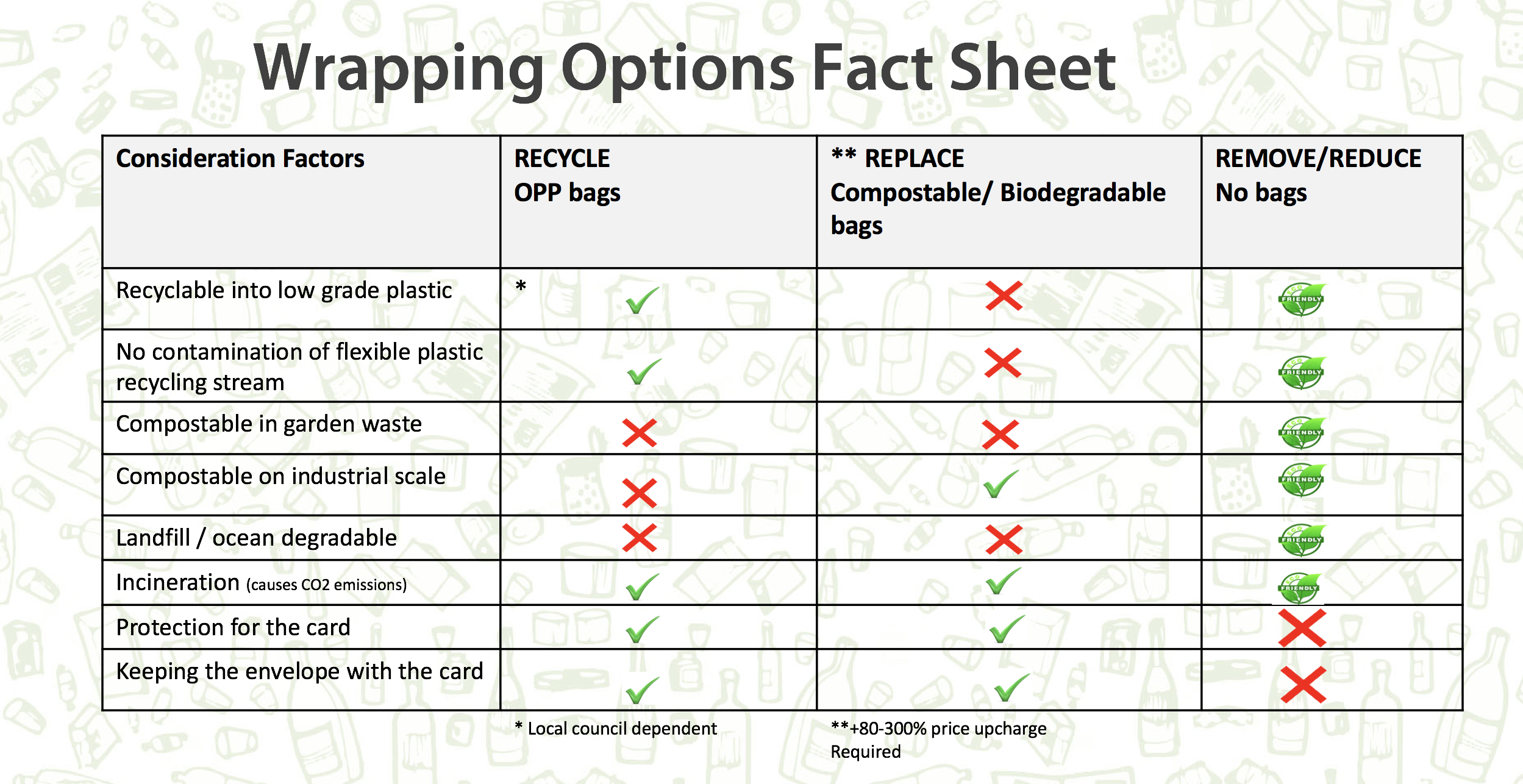“Consumers are proactively objecting to unrecyclable and unnecessary plastic packaging, and this issue is predicted to be the top issue for consumers over the next decade,” stresses Sue Morrish, who co-owns Glebe Cottage/The Eco-Friendly Card Co with her husband Scott. The company, which this year celebrates its 25thanniversary has always placed minimising its environmental impact as a top priority.
Speaking at the recent GCA AGM and Conference, Sue, shared her wealth of knowledge on the subject of the industry’s environmental impact, notably over the issue of ‘cellowrapping’ of cards.

Sue’s presentation followed that of GCA president Ceri Stirland (and UKG customer and channel director) who set the scene and presented a Wrapping Options Fact Sheet showing the pros and cons of the different alternatives against the matrix of Recycle, Replace, Remove/Reduce considerations.

Sue Morrish then added more ‘food for thought’ by delving deeper, highlighting how there is much ground to be gained, and how progress is being hampered by the dis-jointed approach from local councils on the recycling front.

Sue summarised her talk for PG Buzz in five key points:
“1. Plastic film poses big problems for the recycling industry. Most local authorities that collect plastic film only collect polythene, and most of that is either incinerated or bundled and sent to the Far East for ‘processing’. Although rigid polypropylene pots etc can be recycled at kerbside, in all my research I found no evidence of any recycling of post consumer polypropylene, ie – if we continue to bag cards in this material it is destined for landfill or incineration – it is not being recycled here in the UK. This situation is unlikely to improve in the immediate future.
2. Compostable films are NOT the same as oxo-degradable plastics. Oxo films are normal plastic with a chemical additive. They break down into plastic microfragments and are already banned in many EU countries. (Some card publishers have been sold this material being told it’s degradable or biodegradable, not only is it environmentally very damaging, some of the publishers I spoke to after the GCA AGM told me how these bags have broken down while in shops or storage).
3. PLA is certified as industrially compostable by the EU standard EN 13432. Bags should be labeled with the compostable logo so consumers know what it is. Compostable bags need to be labeled as such, but even though it can show a certification logo (like the ‘seedling’ logo), labeling could be much better. Unfortunately, there are no guidelines about this at the moment. Collection of compostable packaging also needs a lot of improving and better communication with the public from local authorities. There are lots of industrial composting sites around the UK but the difficulty is getting the packaging to that destination.
4. I addressed some of the criticisms of PLA film, such as the idea it produces methane in landfill (there is no evidence of this), that it takes up land that could be used for food (but in actual fact crops are used for food, industrial uses and PLA resin) and that it contaminates existing recycling streams (but post-consumer film is not being recycled, so it’s not possible to contaminate something that doesn’t exist!)
5. Global warming is an even bigger crisis than plastic pollution – if we want to reduce the CO2 footprint of our cards then compostable packaging has a much lower carbon footprint than conventional plastic. It’s also considered carbon neutral if it does end up being incinerated to create energy.”
Sharing her well-researched opinion, Sue said: “More than ever, we believe that if you are going to use a bag, then compostable is the right option for the environment.”

Aiming high on the green front, Sue urges publishers and retailers to collectively accept that the ‘norm’ can be over turned.
“Whether it’s naked cards, or compostable film, it is possible to banish plastic film from the card industry,” believes Sue.






















